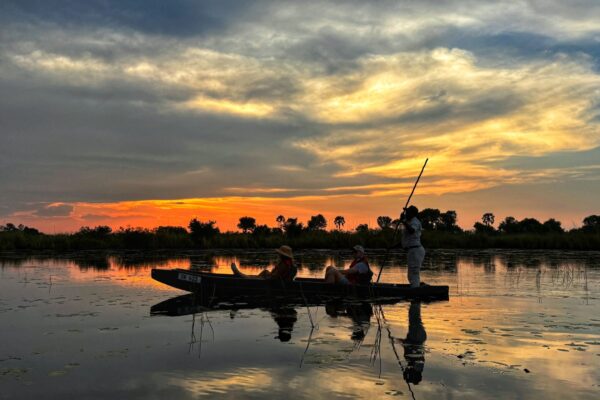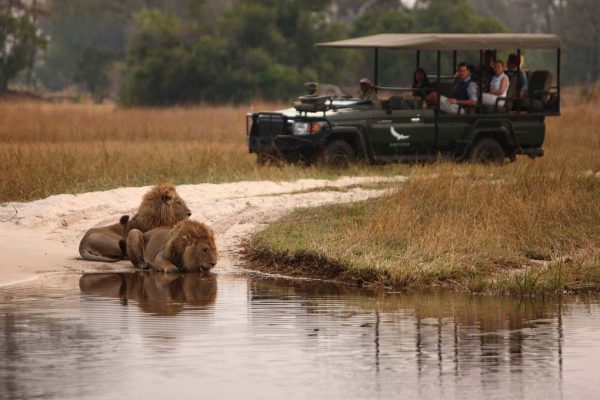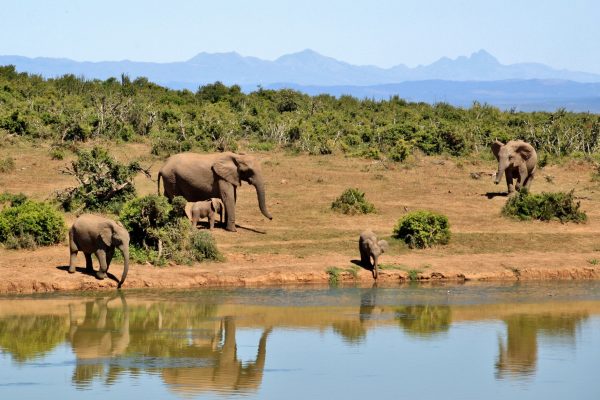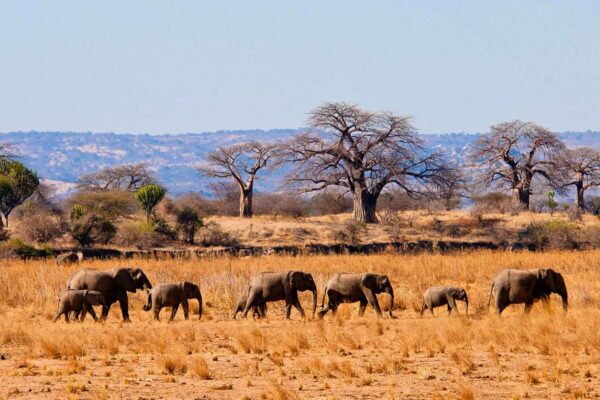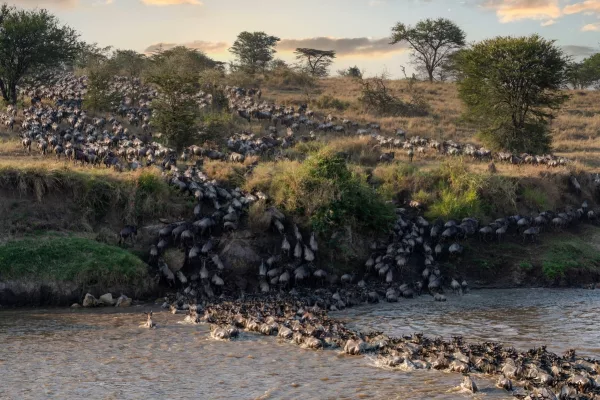Best African Big 5 Safaris: Big Five Animals & Best Places
“Big 5 safaris” refer to searching for Africa’s most prized animals: the lion, leopard, elephant, black rhinoceros, and Cape buffalo. The term originated from the difficulty big-game hunters faced when hunting these animals on foot, and today it is used to describe the most sought-after safari experience. These safaris can be found in many parts of Africa, with popular locations including Kruger National Park in South Africa, the Serengeti in Tanzania, and the Okavango Delta in Botswana.
The pure excitement of coming face to face with one of Africa’s Big 5 is unmatched by any other wildlife experience, and if there’s one thing that Africa excels at, it’s wildlife. The African Big Five Animals—lion, elephant, rhino, buffalo, and leopard—have long been considered the most dangerous animals in the world. Today, you can still see these majestic creatures in many parts of South, Southern, and East Africa, and seeing them all in one national park or game reserve is sure to be an adrenaline rush.
We recommend meticulous planning with your safari specialist to guarantee that your expectations are satisfied, as our Big 5 African safari destinations vary greatly. If this is your first safari, you should definitely visit Tanzania’s Ngorongoro Crater or one of the private Kruger reserves, like Sabi Sands, where you can almost guarantee a perfect African Big 5 safari in only a few game drives.
In search of a more untamed and distant Though rhinos aren’t likely to be spotted there, the South Luangwa region of Zambia is famous for its high concentration of big game, including four out of the five members of the Big Five. Walking safaris originated here. In Botswana’s Moremi Game Reserve, you can see leopards, elephants, lions, cheetahs, and packs of wild dogs on a regular basis, but no rhinos. The reserve is mostly grassland and has occasional marsh areas.
Tailor-Made African Big 5 Safaris
However, we understand the significance of seeing these iconic creatures, which is why our African Big 5 safaris offer a high probability of encountering each of the five species. In addition, we have a good idea of when to go and where to go: We can tell you the best places to see leopards and rhinos, when to go on a safari in the Serengeti to see the massive herds of migrating wildebeest with big cats chasing after them, and when to see incomprehensible concentrations of elephants and buffalo in Botswana’s Chobe River during the dry season, among other things.
Take a look at our African Big 5 safaris and lodging options, or get in touch with an Africa Safari Expert who can help you design a personalized holiday.
Africa’s Big Five Animals: What Are They
The Best African Big Five Safaris
Seeing the Big Five—elephants, Cape buffalo, lions, leopards, and rhinoceros—is the ultimate safari experience. Seeing the Big Five up close and personal while immersed in some of Africa’s most dynamic environments is an experience you won’t soon forget. An experienced guide who is well-versed in the local flora and fauna is included with every African safari package.
Going on a safari is a great way to see these amazing animals up close while also helping to protect their natural environment. By doing so, you may make your trip to Africa more meaningful and contribute to the survival of the continent’s wildlife.
Kruger, Victoria Falls and Okavango Delta
Days: 10 | Nights: 9
On this Captivating Kruger, Victoria Falls and Okavango Delta African safari tour, you’ll get up close and personal with wildlife. This journey will take you to three stunning natural realms, where you will be able to get up close and personal with Africa’s fiercest animals and experience luxury, eco-conscious accommodations in incredible locations.
Botswana and Zimbabwe Safari
Days: 8 | Nights: 7
Unleashed Botswana And Zimbabwe Safari plus It’s Hidden Gems. A Luxury Botswana and Zimbabwe Safari Itinerary Guide You Should Steal takes you to traverse some of Africa’s most iconic landscapes with three of the world’s most impressive natural attractions. Botswana and Zimbabwe Safari Adventure Tour with Iconic Landscapes & Big 5 Safari.
South Africa, Botswana And Zimbabwe Itinerary
Days: 12 | Nights: 11
Discover the rich history of Cape Town, climb the city’s renowned Table Mountain, and see Robben Island and the thriving Waterfront. For the best safari experience, travel from here to the Sabi Sand Game Reserve in Kruger National Park. Expect thrilling encounters while visiting this place, which is home to an enormous.
Cape Town And Kruger Tour
Days: 6 | Nights: 5
Right at the bottom of the massive African continent, South Africa is home to the two most visited destinations, Cape Town and the Kruger National Park. For everyone wishing to see Africa, they are ideal locations. Kruger is the Big 5 safari capital; Cape Town is a multicultural city with a rich history and culture and some of the best restaurants in the nation.
Tarangire/Serengeti/Volcanoes Itinerary
Days: 13 | Nights: 12
This Tarangire/Serengeti/Volcanoes Itinerary contains all of the elements needed to make a safari masterpiece. Unrivaled service at intimate estates, beautiful places dedicated to the preservation of Africa’s animals, and a plethora of photographic opportunities, all properly paced and ready to be savored.
Kenya And Tanzania Safari Itinerary
Days: 12 | Nights: 11
This 12 Days Kenya And Tanzania Safari Itinerary guide encompasses the best of Kenya and Tanzania, as well as the most likely route for witnessing the Immense Migration of millions of wildebeest and zebra over East Africa’s great plains. Admire the snow-capped Mt. Kilimanjaro in Tanzania, the world’s highest free-standing extinct volcano.
African Big 5 Safari Destinations
Our African Big 5 safari Destinations are all home to lions, elephants, buffalo, leopards, and rhinos, with the exception of Etosha National Park in Namibia, which does not have any buffalo. Never assume that you will encounter every member of the Big 5 on your safari; leopards, for example, are infamously elusive, and rhino populations are declining across Africa.
To choose the perfect African Big Five safari Destinations for your needs, consult with an Africa Safari Expert: For the best chances of seeing a particular animal, like a leopard, or for the most spectacular Big 5 sightings, like large herds of elephant or prides of lions hunting buffalo, we can advise you on the best destinations to visit. Some of these locations also offer better and more guaranteed sightings than others.
1. South Africa: Kruger National Park & Private Reserves, Eastern Cape & Madikwe
South Africa’s private reserves bordering the world-renowned Kruger National Park, a longtime Big 5 stronghold, provide some of the most dependable Big 5 sightings in Africa. Leopards are plentiful at Sabi Sands Private Game Reserve, and visitors can usually expect to see all five of Africa’s most iconic animals in a few of days.
Although leopards are notoriously elusive in these areas, private game reserves in the Eastern Cape and the far northern Madikwe Private Game Reserve provide malaria-free, family-friendly environments with amazingly simple Big 5 animal viewing.
Our EPIC Safari Experience at Kruger National Park
2. Botswana – Chobe National Park & Okavango Delta/Moremi Game Reserve
While Botswana’s two heavyweight safari sites may not have any rhinos, you won’t be disappointed with the abundance of other wildlife, including the greatest elephant herds in Africa, lions, buffalo, and leopards.
You may see lions, buffalo, and elephants in Chobe National Park’s Okavango Delta and Savute region year-round, but August through late October is when you’ll see the most on the Chobe River.
The Okavango Delta Moremi Game Reserve Overlanding Adventure
3. Zimbabwe – Hwange & Mana Pools National Parks
Many people don’t think of Zimbabwe as a safari destination, but those who have been there rave about the rustic lodging, helpful guides, and pristine national parks. About 30,000 elephants and other rare and endangered species, including black rhinos, sable and roan antelopes, wild dogs, and bat-eared foxes, call Hwange National Park, the largest reserve in Zimbabwe, home. Birdwatchers go there in droves during the Green Season, when they’ve seen over 400 different species.
Canoe safaris (you’ve truly lived until you’ve paddled past an elephant standing in the river) and sunset boat tours are popular water activities in Mana Pools because of the location on the Zambezi River. Low crowds and spacious pools characterize this area (the local Shona word for “four”).
Mana Pools – A Wildlife Photographer’s Guide.
4. Tanzania – Serengeti & Ngorongoro Crater
Although elephants and rhinos are less common in the Serengeti than zebra and wildebeest herds due to the vast open grasslands, the sheer variety of animals in the area more than makes up for this. From November to July, the Serengeti is a hive of activity as the lion migration passes through. With less trees around, leopards are more visible than you would expect.
5. Kenya – Masai Mara
Many people visit the Masai Mara just to see the wildebeest migration, but it is also a great place to see all five of the Big Five. If you want to see the Big Five in their natural habitat, you should visit a private conservancy. If you go between August and November, you have a good chance of witnessing lions hunting.
Is a Masai Mara Safari Worth the Hype
6. Namibia – Etosha National Park
Although buffalo are found in the neighboring Waterberg Plateau and Caprivi Strip, the number of elephants and lions more than compensate for the dearth of buffalo in Namibia’s flagship reserve. The best area in Africa to see black rhinos is Etosha. While you’re there, make sure to check waterholes twice a day; lions and leopards frequently utilize these spots as ambush points.
African Big 5 Safari Travel Advice
Before you embark on your Big 5 safari, read our travel advice to ensure you’re ready to face Africa’s most hazardous animals. To get more details and suggestions for your Big 5 safari, just click on the links to the individual countries or regions that interest you.
Malaria-free Big 5 Destinations
Despite the Big Five’s reputation as Africa’s deadliest predators, the malarial Anopheles mosquito really poses a greater threat to human health. Although the risk is usually minimal or seasonal, it is still recommended that you consult with both your safari expert and a medical practitioner or doctor to determine the level of risk, as well as the best course of action and medication to avoid getting malaria, since many of our classic Big 5 destinations are located within Africa’s malarial belt.
Or, you might choose from a variety of first-rate safaris and lodging options in malaria-free Big 5 locations in the Eastern Cape of South Africa, including Pilanesberg National Park and Madikwe Private Game Reserve. Enjoy all the excitement of a Big 5 safari without the danger of malaria—the perfect option for families and those who have never been on a safari before.
The Best Time for an African Big 5 Safari
Knowledge of the best times and places to visit in Africa is essential, as the seasons have a profound effect on the whereabouts, habits, and concentrations of animals across the continent. During the destination’s dry season, when vegetation is thinner and animals congregate near permanent water sources, game sightings are generally more likely to occur. Out-of-season travel is the most pleasant time to go because of the dry weather, cold nights, and mild days; yet, it is also the most expensive because of the large number of tourists. African Big Five safaris can be just as profitable, if not more so, in terms of sightings and money saved, and you never know, you might even be the only ones there.
If you want to know when you’ll get the most out of your African Big 5 safari, give us a call and we’ll help you choose the perfect time and place.
Safety on an African Big 5 Safari
From the point of view of a hunter, the Big Five are the most dangerous animals in Africa. However, for an unarmed tourist in a sturdy 4X4 accompanied by an expert guide and tracker, the danger of an encounter with the Big Five is negligible.
Keep in mind that most of the lodges and camps in Africa’s game reserves and national parks (especially those outside of South Africa) do not have fences, thus it is not uncommon for animals like elephants to wander onto the grounds of a safari resort in Botswana or Zambia. When you get to your hotel, you’ll have a safety briefing. Before going on game drives, your driver or guide will give you some instructions. Also, if you’re worried about getting home safely at night, you can always ask your guide or the lodge guard to accompany you to your room or tent.
Walking Safaris in Big 5 Country
Imagining a walking safari in Big Five country must have been an adrenaline rush unlike any other. An amazing Big 5 walking safari awaits you, where the possibility of encountering numerous enormous and perhaps deadly creatures lurks around every turn. An armed guide will expertly look after you, and they’ll have rangers and trackers on standby to make sure you’re safe. Our chosen Big 5 walking safaris in Zambia and Kruger National Park have shockingly high standards of lodging, cuisine, and comfort, and the quality of the guides may be the best in all of Africa.
The African Big 5 Animals
1. African elephant (Loxodonta africana)
The largest land mammal in the world is the male African elephant, which may reach a weight of 7,000 kg (15,000 lb) and a height of four meters (13 feet). Their enormous ears aid in maintaining a constant body temperature, and their incisors develop into tusks that they employ for digging, digging, and moving objects. Mature males sometimes live alone or in bachelor herds, whereas related females tend to congregate in family groupings with their calves. Elephants often congregate in large groups of friends and family.
Where to see big herds:
- Chobe National Park in Botswana
- Hwange National Park in Zimbabwe
- Amboseli National Park in Kenya
- Addo Elephant National Park in South Africa
- Etosha National Park in Namibia
Elephants 101
2. African Buffalo (Syncerus caffer)
Large and horned, the African buffalo (often called the Cape buffalo) is a type of bovine native to Africa. Horns, which are present in both sexes, run the length of the top of the cranium like a continuous bone shield. The fact that buffalo have never been domesticated is due to their unpredictable and courageous nature. They have only a tenuous relationship to domestic cattle and other bovines, such as the Asian water buffalo. Buffaloes aren’t easy prey; only lion prides can bring down a herd of these formidable cattle, which are able to defend themselves and even gore predators in order to save their fellow animals. A pride of lions can be readily intimidated by a herd of buffalo, and there is evidence of a determined buffalo ‘walking off’ when attacked by young lions.
Where to see big herds:
- Chobe in Botswana
- Addo in South Africa
- Hwange in Zimbabwe
- Masai Mara National Reserve in Kenya
These African Buffalo Have Each Other’s Backs
3. African Lion (Panthera leo)
Lions were second only in distribution to humans among big land mammals around 10,000 years ago. Most of the world’s wild lions reside in sub-Saharan Africa, making them a particularly endangered species today. An unusually gregarious feline, the lion lives in prides with other females of the same family, their young, and a small number of adult males. Prides sleep soundly during the day and hunt in the early hours of the morning. Apex predators are usually females, and they hunt in groups.
Where to see them:
Lions 101
4. Leopard (Panthera pardus)
Melanistic leopards are known as black panthers, and they resemble jaguars in size and weight as well as the rosettes that adorn their coats. Leopards hunt alone, using their exceptional camouflage skills and strength to sling their victims high into trees to evade other predators and scavengers. Leopards can attain speeds of up to 58 km/36 mi per hour, making them one of the quickest big cats. Because of their exceptional camouflage skills, reclusive nature, and nocturnal habits, leopards can be rather elusive when encountered in nature. Make sure your game watching takes place in reserves with a healthy and stable leopard population if seeing this animal is a top priority by informing your consultant of your want to see this species.
Where to see them:
African Leopard
5. Rhinoceros (Diceros bicornis and Ceratotherium simum)
The shape of the rhino’s top lip, rather than its color, distinguishes the many subspecies of this animal, which can be anywhere from light grey to medium brown. The top lip of a “white” rhino is wide and square, whereas that of a “black” rhino is hooked and pointed. Rhinos are being slaughtered to meet the Asian demand for their horns, which has led to the species’ classification as critically endangered. Rhino horns can regrow after being severed because they are composed of keratin, the same protein that makes our hair and nails. Rhinos that manage to evade the initial attack almost always succumb to shock and hemorrhage after having their horns chopped off with a machete or chainsaw, as the illicit trade places a high value on the subcutaneous portion of the horn.
Where to see them:
A Rhino’s Life:


